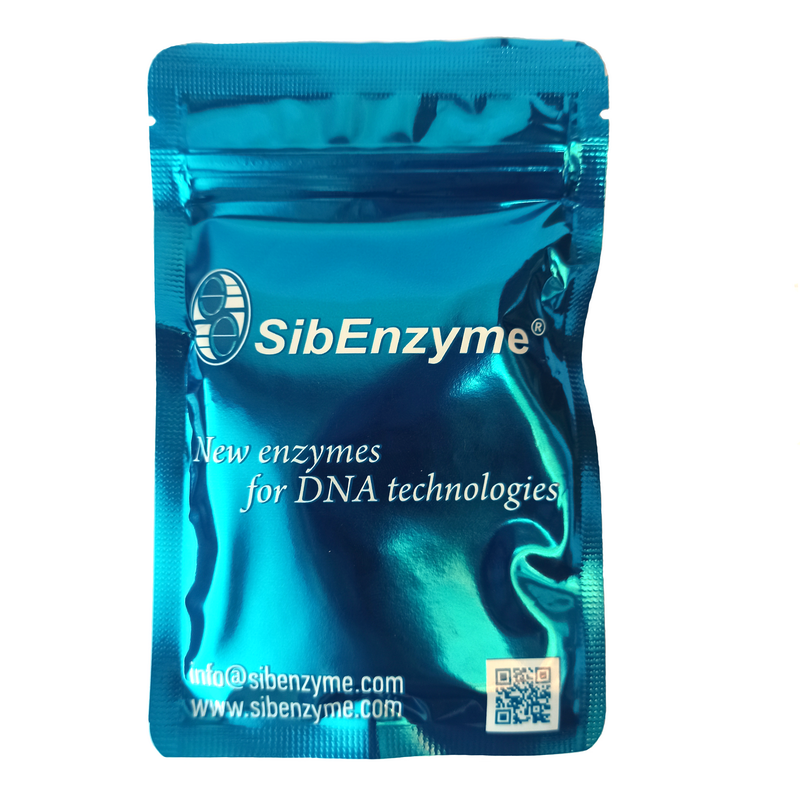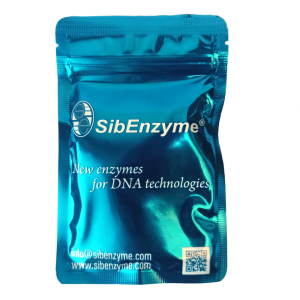Description
T4 DNA Ligase catalyzes the formation of a phosphodiester bond between juxtaposed 5` phosphate and 3` hydroxyl termini in duplex DNA or RNA. This enzyme will join blunt-end and cohesive end termini as well as repair single stranded nicks in duplex DNA, RNA, or DNA/RNA hybrids.
Applications:
– cloning of restriction fragments;
– joining linkers and adapters to blunt-ended DNA
Source: Isolated from E.coli strain that carries the cloned DNA ligase gene from bacteriophage T4
Unit definition: T4 DNA Ligase catalyzes the formation of a phosphodiester bond between juxtaposed 5` phosphate and 3` hydroxyl termini in duplex DNA or RNA. This enzyme will join blunt-end and cohesive end termini as well as repair single stranded nicks in duplex DNA, RNA, or DNA/RNA hybrids.
Applications:
– cloning of restriction fragments;
– joining linkers and adapters to blunt-ended DNA
Reaction buffer: SE-buffer DNA ligase T4
Storage conditions: 10 mM Tris-HCl (pH 7.5); 50 mM NaCl; 0.1 mM EDTA; 7 mM 2-mercaptoethanol; 50% glycerol. Store at -20°C.
Quality control: The enzyme is purified free of contaminating endonucleases andexonucleases.
Notes: A precipitate may be observed in T4 DNA Ligase Buffer after defrosting.
Before the first use we recommend to heat this buffer at 37°C for 10-15 min and dissolve the precipitate by shaking.
Also we recommend to dispense the buffer into small aliquots and store them at -20°C.
Avoid defrosting the buffer more than 2-3 times. The aliquot of T4 DNA Ligase Buffer may be stored at +4°C during 7 days.



